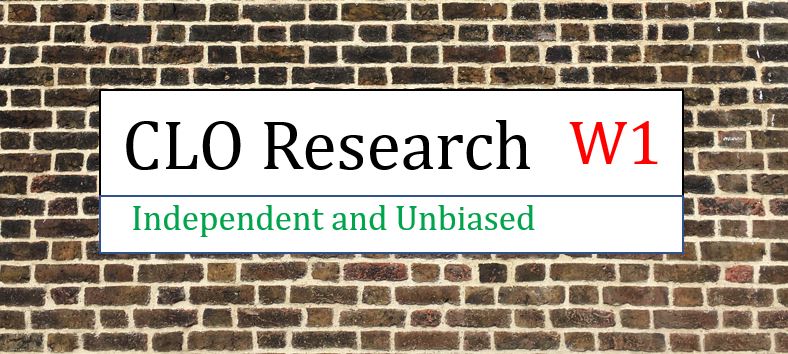“You must look at facts because they look at you.” – Winston Churchill
Below is a list of some commonly asked questions which would be addressed in this article –
- What are the characteristics of top-performing deals based on 52 EU CLO deals issued from Jan to Oct 2018?
- Where are we now in terms of EU CLO 2018 arbitrage economics?
- What about the relationship between performance alpha and annualised par gain?
- Would CLO deals with first loss risk retention fare better in a downturn?
- What about deals with the tight cov-lite languages?
- What about deals with large exposure to Covid-19 risk sectors?
- Would ESG inclined managers do well?
The graph below shows the performance alpha for 52 EU CLO deals (issued in 2018).

The blue line in the above graph shows the total annualised performance alpha (total underlying unlevered collateral annualised return minus loan index return). The underlying CLO collateral annualised return is calculated for the period from the closing date to the last trustee reporting date (April/May 2020).
1 What are the characteristics of top-performing deals based on 52 EU CLO deals issued from Jan to Oct 2018?
Please see the table below for more colour on the characteristics of deals in each quartile:

Top Quartile –
- Average performance alpha at +30bp
- Its arbitrage picture is now at -1.9% (Annualised gross collateral return of 0.2% minus WACC including management fees of 2.1%)
- Average annualised par gain at 0.1%
- 9 out of 13 deals are first loss risk retention deals (4 are vertical risk retention)
- 4 out of 13 deals have tight cov-lite languages
- Its WACC including management fee is marginally higher than the other three quartiles’
- Average of 17.0% exposure to Hotel, Gaming & Leisure; Consumer goods: Non-durable; Consumer goods: Durable; Retail; Automotive; Transportation: Consumer; Energy: Oil & Gas; Transportation: Cargo
2 Where are we now in terms of EU CLO 2018 arbitrage economics?
The average arbitrage picture based on the 52 EU CLO deals was -2.5%p.a. (Average collateral annualised return of -0.5% minus WACC of 2.0%)

3 What about the relationship between performance alpha and annualised par gain?
Deals with annualised par gain are spread across the four quartiles!
4 Would deals with first loss risk retention fare better in a downturn?
Interestingly, 9 out of 13 deals are first loss risk retention deals in the top quartile. Pre-pandemic, there were more first loss risk retention deals clustered in the second and third quartile. In general, some of these deals tend to be managed slightly more conservatively given what could be at stake and hence better performance in a downturn. That said, performance is still driven pretty much by the manager’s investment process.
5 What about deals with the tight cov-lite languages?
Deals with tight cov-lite languages are spread across quartile 1, 2 and 4 – perhaps it is more manager’s investment process and decision rather than attributing too much to this language?
6 What about deals with significant exposure to Covid-19 risk sectors?
Better performing managers tend to have lower exposure to Covid-19 risk sectors.
7 Would ESG inclined managers do well?
ESG inclined managers who avoided gambling sectors might fare better given that the Hotel, Gaming & Leisure sector is very exposed to Covid-19 risk.
Manager selection market –
- Three top-performing deals’ latest underlying collateral annualised return was 0.7% as of 29 May 2020 as compared to their average WACC of 2.0%.
- The bottom deal’s latest underlying collateral annualised return was -2.4% as of 29 May 2020 as compared to its WACC of 2.1%.
ESG –
- ESG inclined managers with lower exposure to Covid-19 risk sectors might do well.
- One of the deals in the top 5 is managed by a CLO manager who also manages a fully ESG-compliant deal (arranged by a Japanese bank late last year). While their 2018 deal is not an ESG-complaint deal, it perhaps could serve as a proxy for investors who like to find out more about the performance of ESG deals.
You shall not license, sublicense, transfer, sell, resell, publish in whole or in part, summarise, reproduce and/or otherwise redistribute the research services or any contents thereof in any manner without the written approval of CLO Research Group.
Disclaimers
The information, research, data, research related opinions, observations and estimates contained in this document have been compiled or arrived at by CLO Research Group, based upon sources believed to be reliable and accurate, and in good faith, but in each case without further investigation. None of CLO Research Group or its service providers, their directors or authorised personnel make any expressed or implied presentation or warranty, nor do any of such persons accept any responsibility or liability as to the accuracy, timeliness, completeness or correctness of such sources and of the information, research, data, research related opinions, observations and estimates contained in this document. All information, research, data, research related opinions, observations and estimates contained in this document are in draft form as at the date of this document and remain subject to change and amendment without notice. Neither CLO Research Group nor any of their third-party providers shall be subject to any damages or liability for any errors, omissions, incompleteness or incorrectness of this document. This article is not and should not be construed as an offer, or a solicitation of an offer, to buy or sell securities and shall not be relied upon as a promise or representation regarding the historic or current position or performance of any of the deals or issues mentioned in it.









